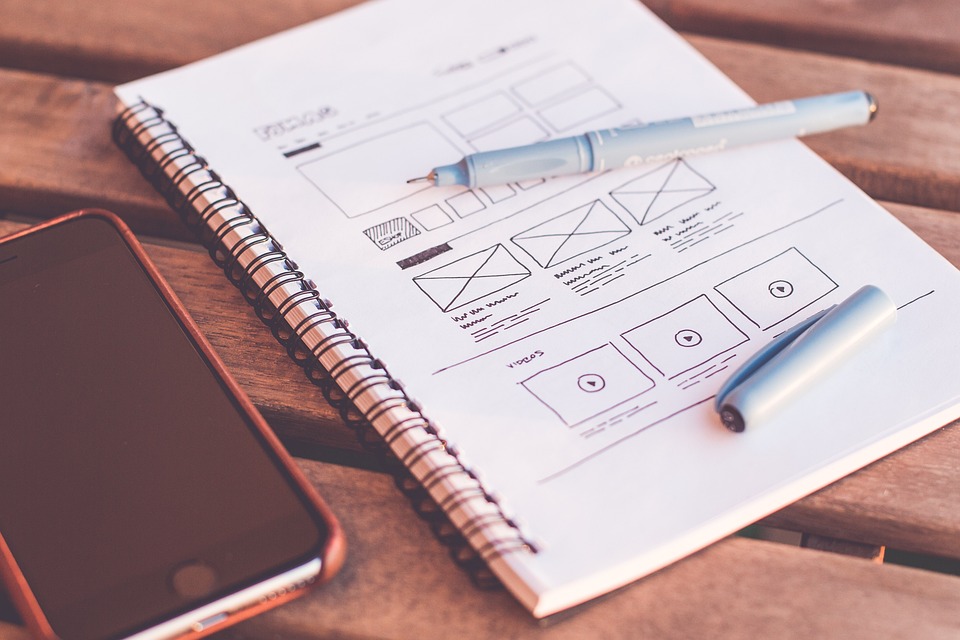
Web design has come a long way since the early days of the internet. In the constantly evolving digital landscape, web design trends and techniques have followed shifts in technology, user expectations, and design innovations. From using tables for layout to the sophisticated CSS Grid systems of today, web design has undergone a remarkable transformation. Let’s explore this evolution and see how each phase has contributed to how we design and experience the web today.
The Early Days: The Era of Tables
In the 1990s, as the World Wide Web started gaining popularity, web designers initially used HTML tables to create intricate page layouts. At that time, tables were the primary method to organize content on a webpage. They allowed designers to arrange text, images, and other elements in rows and columns, bringing some structure to the otherwise linear web pages typical of early HTML.
While this approach offered more control over layout design than simple text and images, using tables for webpage layout had several drawbacks. It made the HTML code bloated, complex, and difficult to maintain. Moreover, tables did not separate content from presentation, which posed challenges for accessibility and search engine optimization (SEO). However, during this early period, designers lacked better tools, so tables remained the go-to solution for web layout.
The Rise of CSS: Separating Design from Structure
The late 1990s and early 2000s saw the introduction and adoption of Cascading Style Sheets (CSS), a breakthrough that dramatically revolutionized web design. CSS allowed designers to separate content (HTML) from presentation (design), providing greater control over layout, colors, typography, and more. Suddenly, web designers could apply consistent styling across multiple pages more efficiently by externalizing styles.
CSS enabled designers to divorce aesthetic presentation from the content layer. This separation improved website maintenance, enhanced accessibility, and made pages more SEO-friendly. With CSS, designers could implement styles in a centralized stylesheet, simplifying updates and ensuring consistency across the entire site.
The Float-Based Layouts: Flexibility and Challenges
Despite its numerous advantages, CSS initially lacked layout tools as robust as tables. To manage layouts, designers started using CSS floats, a technique that was initially intended for wrapping text around images. With float, designers could create more complex, multi-column page designs that responded more dynamically to different screen sizes.
While float-based designs offered more flexibility than table layouts, they were not without issues. The method often required complex CSS hacks to achieve desired layouts and frequently led to issues, such as the "clearfix" problem, where floated elements did not inherently clear past their containing elements. Complicated layouts could become cumbersome and lead to unpredictable results across different browsers.
The Flexbox Solution: Modernizing Layouts
As web standards and browser support evolved, the CSS Flexible Box Layout (Flexbox) was introduced to offer a sophisticated solution to layout issues. Officially becoming a standard in 2012, Flexbox made it easier to design complex layouts that adapt dynamically to different screen sizes and orientations. It provided powerful alignment, directionality, and ordering controls for web designers, freeing them from many float-specific challenges.
With Flexbox, developers could easily design responsive layouts that adjusted seamlessly across different devices, thus aligning with the wider industry’s move towards mobile-friendly and adaptive designs. Flexbox was a significant leap forward, offering streamlined code and easier methods for aligning items within a container—horizontally and vertically.
CSS Grid: A New Frontier in Web Design
Further advancing the capabilities of CSS for web layout, CSS Grid emerged as a game-changing technology, reaching widespread browser support in 2017. It offered a two-dimensional layout system, providing unparalleled precision in placing elements both row-wise and column-wise. CSS Grid introduced grid lines, grid areas, and the ability to overlap elements, making it possible to design layouts that previously required convoluted CSS hacks or even JavaScript.
CSS Grid revolutionized the way designers approach web layout, providing the tools to craft responsive and intricate designs directly in CSS, without relying on third-party frameworks or complex hacks. By seamlessly integrating with Flexbox, CSS Grid makes it possible to create highly sophisticated and fully responsive layouts for different screen sizes with clean, readable code.
Conclusion: The Continual Evolution of Web Design
The evolution of web design from tables to CSS Grid reflects broader technological advancements and changing user expectations. Each new technique has built on the limitations of its predecessor, pushing the boundaries of what is possible in web design. As we continue to move forward, web design will undoubtedly evolve further, exploring new horizons in creativity and user experience driven by emerging technologies such as augmented reality, artificial intelligence, and voice user interfaces.
The journey from table-based layouts to CSS Grid is not just about technology; it’s about empowering designers to push creative boundaries while improving usability and accessibility. As designers and developers look to the future, they can look back on this evolution as a testament to how web design accommodates both aesthetic and functional needs, ensuring that the web remains an inclusive, accessible, and engaging platform for all.


